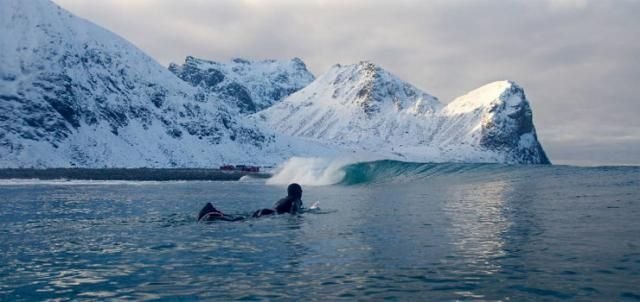|
|
Arctic Surfing
|
The Arctic is especially vulnerable to the effects of global warming, as has become apparent in the melting sea ice in recent years. Climate models predict much greater warming in the Arctic than the global average, resulting in significant international attention to the region. In particular, there are concerns that Arctic shrinkage, a consequence of melting glaciers and other ice in Greenland, could soon contribute to a substantial rise in sea levels worldwide. Climate models give a range of predictions of Arctic sea ice loss, showing near-complete to complete loss in September anywhere from 2040 to some time well beyond 2100. About half of the analyzed models show near-complete to complete sea ice loss in September by the year 2100. More recently, the Catlin Arctic Survey concluded that summer ice loss would occur around 2029.
In September 2008, the extent of the summer Arctic ice cap was at a near-record low, only 9.01 percent greater than the record low in 2007, and 33.6 percent below the average extent of sea ice from 1979 to 2000.
The current Arctic shrinkage is leading to fears of Arctic methane release. Release of methane stored in permafrost could cause abrupt and severe global warming, as methane is a potent greenhouse gas. On millennial time-scales, decomposition of methane hydrates in the Arctic seabed could also amplify global warming. Previous methane release events have been linked to the great dying, a mass extinction event at the boundary of the Permian and Triassic, and the Paleocene-Eocene thermal maximum, in which temperatures abruptly increased.
|
|









